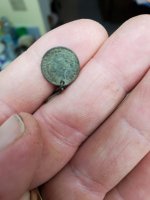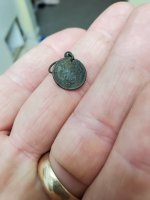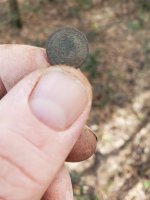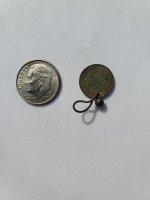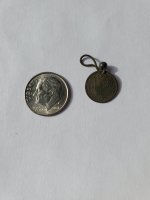Hi everyone! Hope everyone had a great Christmas!
I was out at an earlier 1900s homesite early this morning when I found this tiny holed coin. I first thought it was a brass ear ring. Couldn't tell what it said until I got home and cleaned it. I believe on the face side it reads imitation of L.G Lauer Nurnberg and the reverse reads 1887 Imitation of a Half Sovereign. I guess it's a reproduction of a real sovereign. But was it copied in 1887? It looks pretty old lol.
Thanks for looking!
I was out at an earlier 1900s homesite early this morning when I found this tiny holed coin. I first thought it was a brass ear ring. Couldn't tell what it said until I got home and cleaned it. I believe on the face side it reads imitation of L.G Lauer Nurnberg and the reverse reads 1887 Imitation of a Half Sovereign. I guess it's a reproduction of a real sovereign. But was it copied in 1887? It looks pretty old lol.
Thanks for looking!


